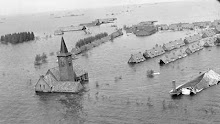Amazingly, the autumn migration of many birds begins around midsummer. These are species that migrate north in the spring to breed, and the further north they go, the earlier they return. Waders go furthest. Their chicks are able to fend for themselves as soon as they are hatched. Their parents often start their migration soon after this has occurred, leaving their young to grow to full size in the abundant daylight and insect life of the high Arctic summer, and then to follow them south to their winter quarters.
I had become aware of this phenomenon in England, where the first autumn waders arrived early in July. It did not seem so preposterous there that those were autumn birds as the weather, even in July, was often wet and cold. But in Aden July was very hot and I was anxious to discover if the birds from the north would follow the same schedule.
Here is a chart, compiled from my daily notes, that shows the average number of species of wader and the average number of individual waders per visit, in the months from March to September 1946. In July, the average number of species increased but the average number of individuals decreased compared to June!
From this, the evidence of autumn migration beginning in July as far south as Aden was inconsistent. However, looking at the records on a species by species basis revealed a different story. Several species had low but fluctuating numbers in June and July but, in three species, numbers increased in July in a sustained manner, Redshank from 10 July, Greenshank and Common Sandpiper from 22 July 1946. These birds nest in the temperate zone of Eurasia and so did not have such a long flight to reach Aden as ones that breed in the Arctic such as the Terek Sandpiper, Little Stint and Curlew Sandpiper. These species did not show a sustained increase until late in August 1946.
>>>



No comments:
Post a Comment